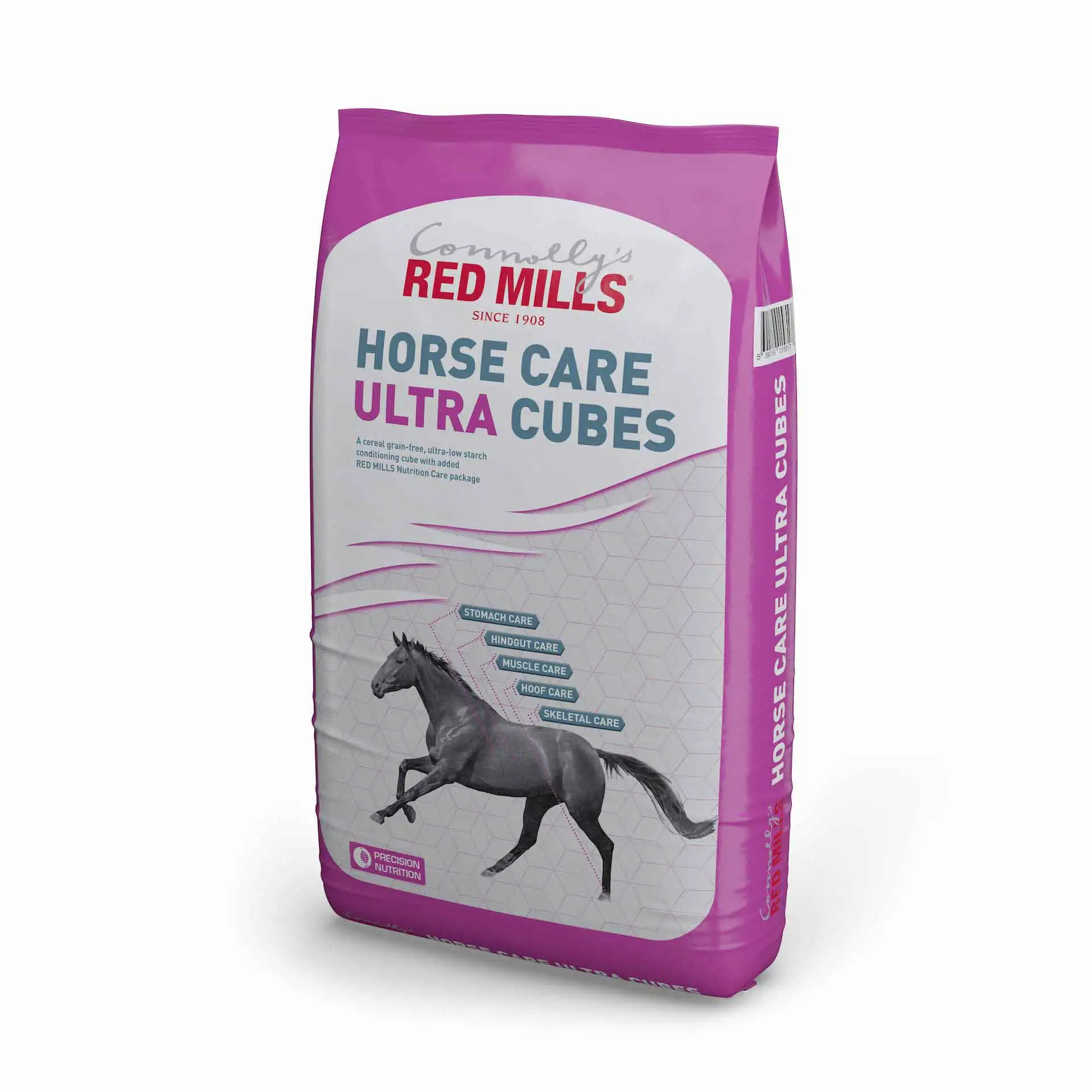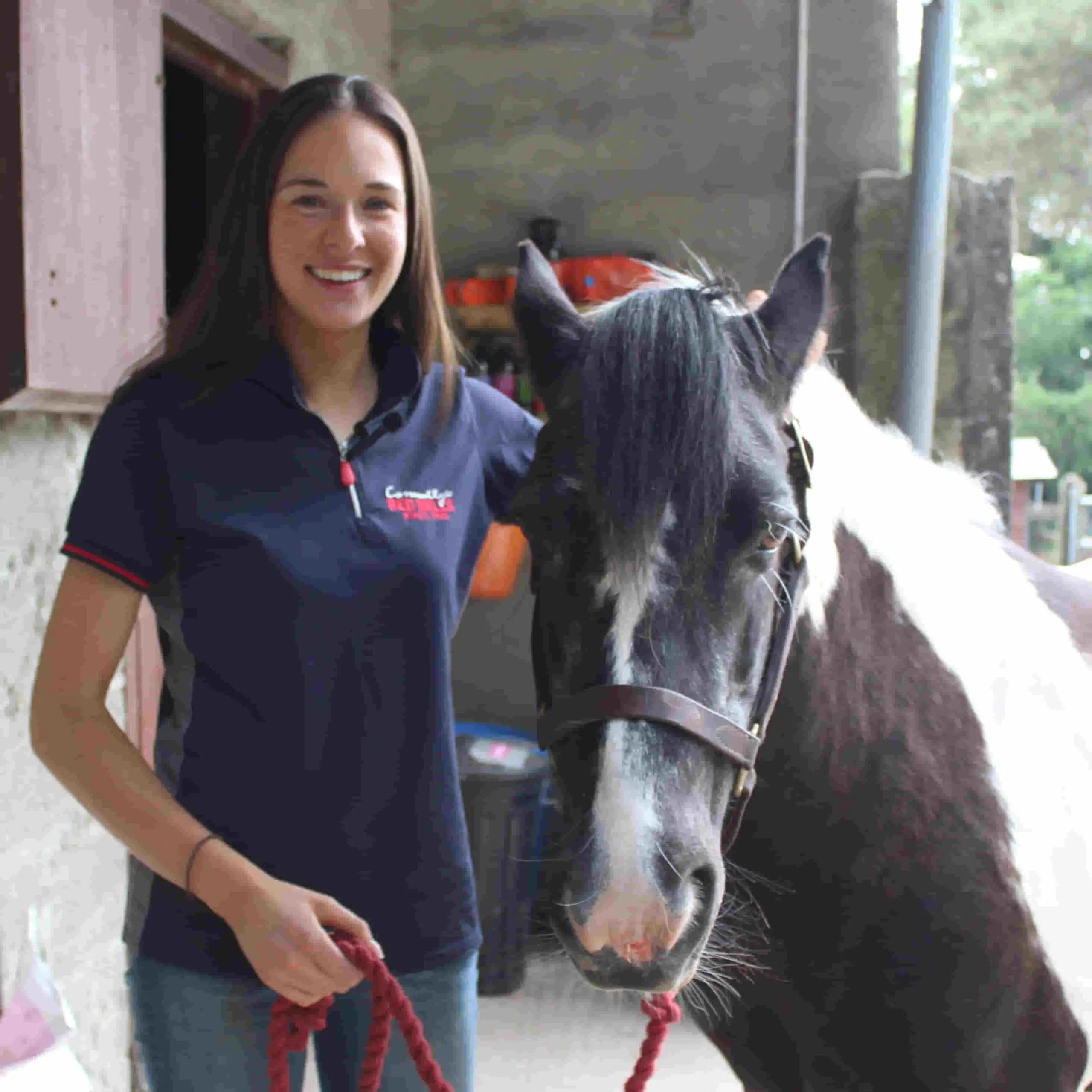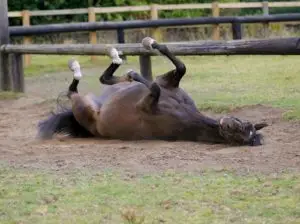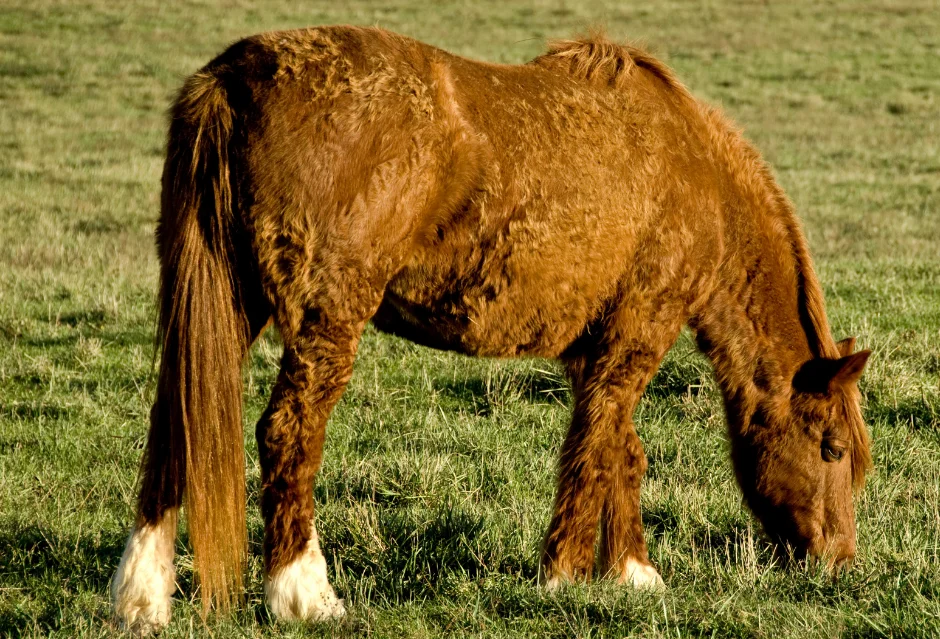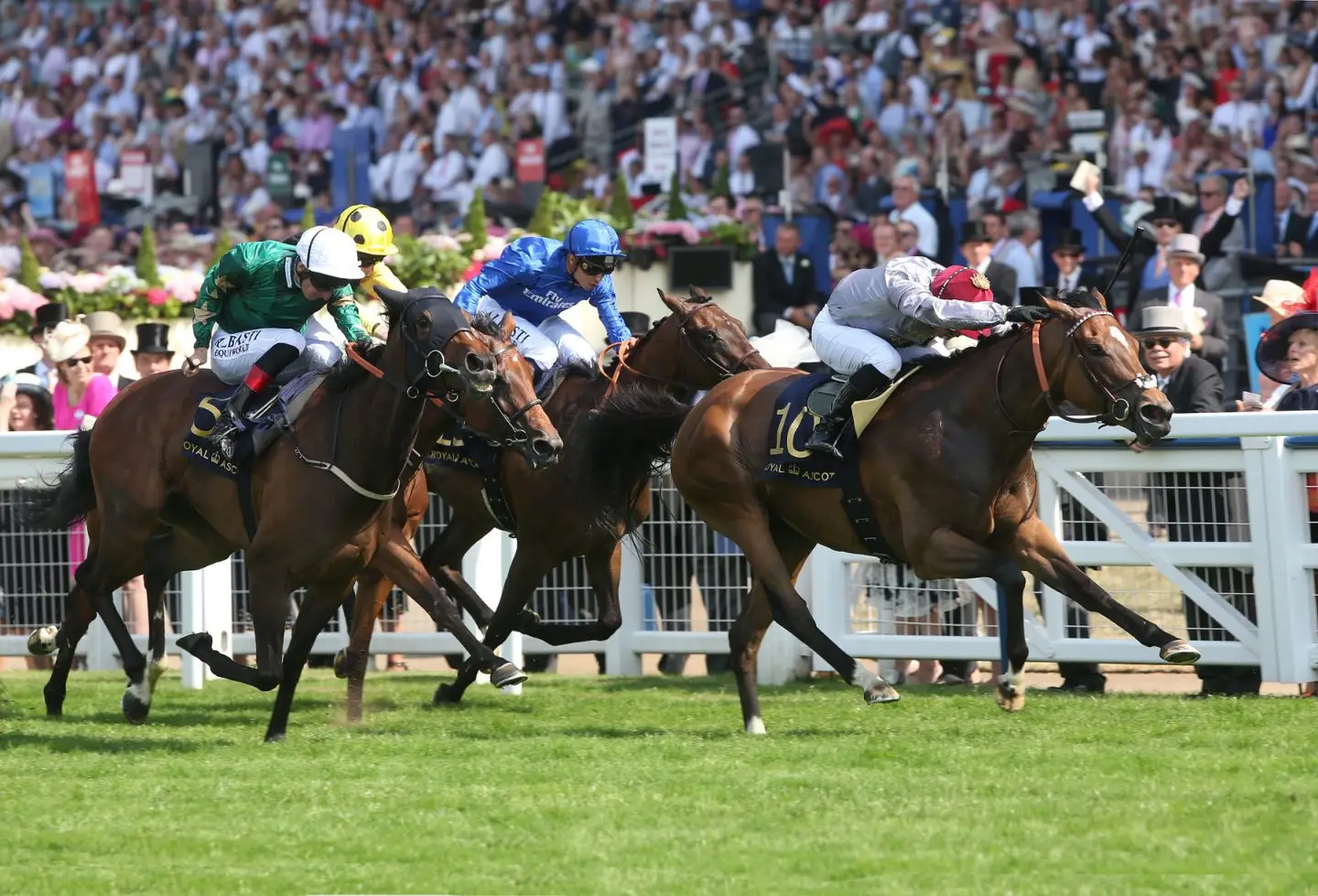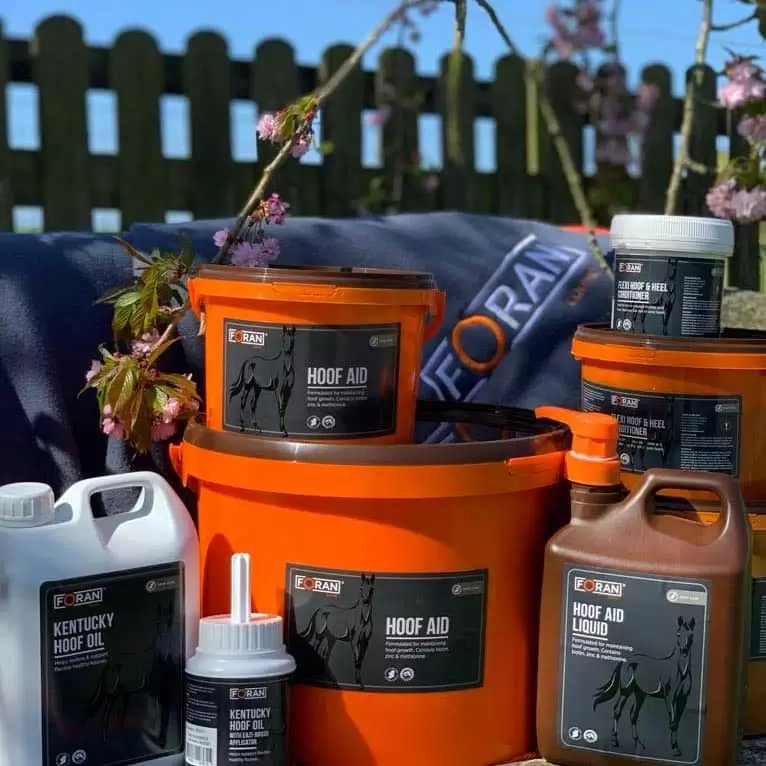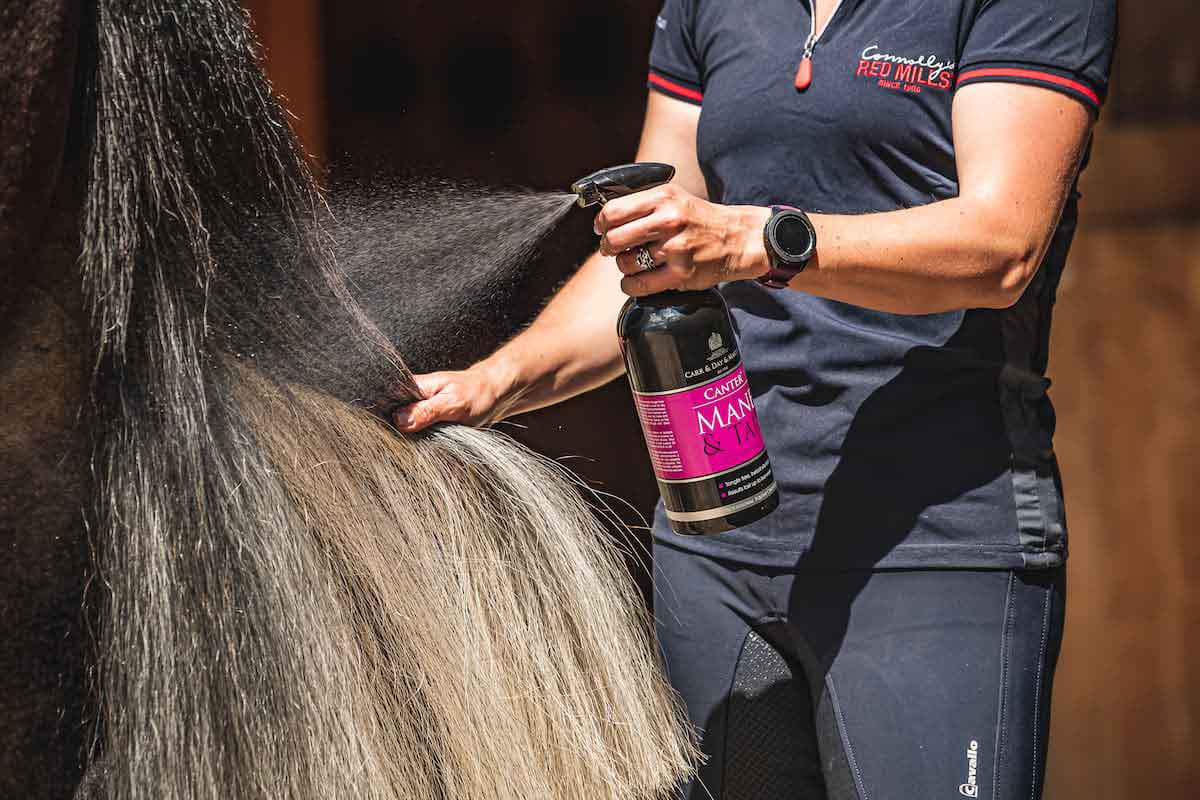Laminitis in horses is an excruciatingly painful and debilitating condition of the tissues (laminae) that bond the hoof wall to pedal bone. The laminae become inflamed which can lead to detachment of the laminar bonds. In severe cases, this can result in rotation and/ or ‘sinking’ of the pedal bone through sole of the foot. Unfortunately, laminitis is often recurrent for individual horses.
There have been massive steps forward in the study of laminitis in the last 15 years and what has become very clear is that although the clinical signs might be the same, there is more than one cause of laminitis.
The Causes of Laminitis in Horses and Ponies
There are many possible trigger factors for laminitis; broadly, these can be defined as:
Recognising the Signs of Laminitis in Horses and Ponies
Key Signs of Laminitis:
- Difficulty walking especially when turning sharply or walking on hard or gravel surfaces
- Shifting weight between feet when resting
- Hooves feel hot to touch
- Increased strength and rate of the digital pulse
- Pain with use of hoof testers at the point of frog on the foot
- The horse may lean back to take weight from the front feet


Equine Diseases Associated with Inflammation Can Increase the Risk of Laminitis
Horses suffering from severe systemic illness as a result of certain types of colic, colitis, retained placenta, severe pneumonia or starch overload are all at increased risk of laminitis. This is because these conditions all result in the absorption of toxins into the blood, which have far-reaching effects in the laminae of the hoof.
Mechanical Overload of the Limb Can Increase the Risk of Laminitis in Horses
Horses can get laminitis from a mechanical overloading of the limb. Typically, this is associated with a fracture or infected joint on one leg, resulting in an increased risk of laminitis in the hoof of another limb, more commonly the opposite leg which is bearing more of the weight.


Metabolic/ Endocrine Disease is Associated with an Increased Risk of Laminitis in Horses and Ponies
Hormonal disorders such as insulin resistance, Equine Metabolic Syndrome (EMS) and Cushing’s disease (pituitary pars intermedia dysfunction; PPID) all increase the risk of laminitis. This is the most common cause of laminitis; up to 90% of laminitis cases are a result of an underlying hormonal disease. Diet can be a trigger factor for laminitis in horses, particularly those with metabolic/ endocrine disorders.
Why do Endocrine Disorders Increase Laminitis Risk in Horses?
The common link in metabolic and endocrinopathic laminitis is abnormal carbohydrate metabolism and insulin dysregulation. Read more about laminitis and insulin resistance here.
In healthy horses the hormone insulin, which is produced by the pancreas, manages the absorption of glucose into the bloodstream. As non-structural carbohydrates (e.g. sugars and starch), are broken down into glucose in the small intestine, insulin is released and either sends the glucose to cells (e.g. muscles) for energy, or to stores for later use (e.g. as muscle glycogen or body fat)Insulin is therefore key to maintaining a consistent blood glucose level.


The Relationship Between Insulin Resistance and PPID in Horses is still being Investigated
Metabolic/endocrine disorders such as EMS can cause the body to have an abnormal response to non-structural carbohydrates. It occurs when the body’s cells start to resist or ignore the signals insulin is trying to send, this is known as insulin resistance (IR). As a result, the pancreas makes more insulin to help glucose enter the cells, causing too much of the hormone to be released into the blood (hyperinsulinaemia). IR is also frequently seen in horses suffering from PPID.
We don’t yet know exactly why IR can result in laminitis, or how PPID and IR may be inter-related, although there are a number of different theories currently being investigated.
Minimizing the risk of Insulin Resistance Associated Laminitis in Horses
The link between obesity and the development of IR is a long-term one and it is likely to become a problem if the obesity persists!
You must get your horse’s body fat down to no greater than a body condition score of 3 (0-5 modified score). Remember that horses have evolved to put on fat through the spring and summer BUT then lose it through the winter. Find out more on assessing your horse’s body condition score here.
Fat and muscle are different tissues. If your horse has a ‘weak outline’ don’t try and improve it by allowing them to gain excessive weight, instead work on their exercise regime so that they build up a good outline through developing muscle.


Exercise as a Tool to Minimize the Risk of Insulin Resistance Associated Laminitis
Exercise has been shown to have a protective effect on insulin resistance in humans and will help your horse to maintain a healthy weight.
Try to ensure that your horse gets a minimum of 1/2hr active walking per day. If your horse is lame from laminitis, speak to your vet before introducing any exercise.
Forage to Reduce the Risks of Laminitis and Reduce the Triggers in Laminitic Horses and Ponies
DO NOT STARVE – It is important not to restrict a horse’s dry matter intake too much as this will increase the risk of oral stereotypies (e.g. cribbing), colic and gastric ulcers. Severely restricting your horse’s food intake can also result in a life-threatening condition called hyperlipemia.
If your horse is overweight, try to choose a late cut hay as this will contain the lowest level of calories. Soaking the hay can reduce its sugar and calorie content further.


Does Soaking Forage Make it Suitable for Laminitic Prone Horses?
Whilst is it generally accepted that soaking hay overnight reduces the sugar levels, the results can vary and therefore soaking cannot guarantee suitability for a laminitic horse. It’s also worth noting that if soaking hay in very hot weather the ‘soak’ time should be no longer than 6 hours, in order to limit the risk of bacterial overgrowth. Care should be taken when disposing of the ‘soak’ water, as it will contain some nitrites, which may have a detrimental effect on the environment
Choose Low Calorie Sources of Forage for the Laminitic Prone Horse
If necessary, and provided your horse’s teeth are in good condition, you can replace up to a maximum of 30% of their hay ration with oat or barley straw. This will provide a low calorie source of fibre. However, straw generally should not be used as the sole forage source, as the protein content is very low and the fibre particularly indigestible, which can contribute to impaction colic in susceptible horses.


Watch Grass Intake in Laminitic Prone Horses and Ponies
Grass is NOT to be considered as ‘fresh air’ for your horse, lush grass can contain high levels of calories and more importantly high levels of non-structural carbohydrates (e.g. sugar and fructans).
If your horse is a ‘good-doer’ or suffers from IR / EMS, it is important that you restrict their grass intake, particularly during the spring and summer.
There are various ways to help you reduce grass intake (see opposite). Each method has its own pros and cons and we recommend speaking to our team of expert nutritionists who will help you choose the most appropriate system for your individual circumstances.
Ways to Control your Laminitis Horse's Grass Intake
- Use of a grazing muzzle
- Strip Grazing
- Track Grazing/Paradise Paddock
- Turning out on a bare/sparse paddock
- Co-Grazing with Sheep
- Mowing and removing the grass
- Reducing time out at pasture
- Increasing the stocking density


Feeding Horse Feed Balancers to Reduce the Risks of Laminitis in Horses and Ponies
If fed in excess, calories, regardless of source (e.g. starch, fat etc), will result in excess weight gain. If your horse can maintain the correct body weight on forage alone they will not need large amounts of hard feed. Instead, consider feeding a nutrient-dense horse feed balancer or an equine multi-vitamin and mineral supplement to ensure your horse’s diet is fully balanced. Connolly’s RED MILLS PerformaCare Balancer or Foran Equine Chevinal Liquid , our horse vitamin and mineral supplement will allow you to provide key micronutrients, without unwanted calories and/or sugars and starches.
Low Starch Horse Feeds Can be Suitable For Horses Prone to Laminitis who need Additional Calories
If your horse does not maintain weight on forage and a horse balancer/vitamin and mineral supplement, you could consider a low starch horse feed such as Connolly’s RED MILLS Horse Care Ultra Cubes is ideal. This horse feed is designed to provide calories from fibre and oil and can be used for horses with laminitis and/or PPID, but who need additional calories.
Meal size should be kept to less than 400g/100kg bodyweight. Large meals will not only result in a higher insulin response, but they will also increase the risk of undigested starch entering the hindgut. Undigested starch in the hindgut can cause several problems and potentially they can even result in inflammatory laminitis associated with starch overload.
